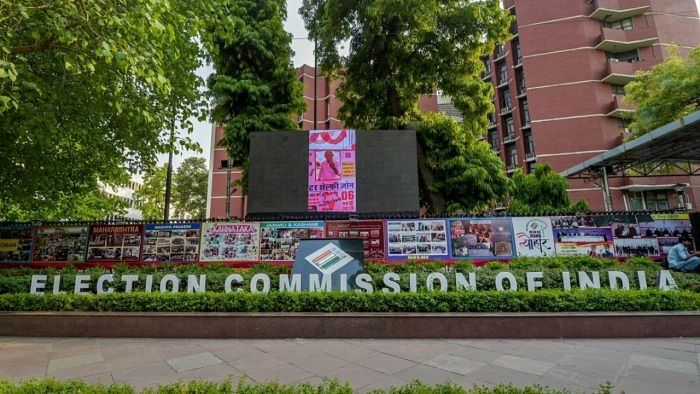
While hearing the batch of pleas for a collegium-like system for the appointment of the Chief Election Commissioner (CEC), the Supreme Court observed that since 2004, no chief election commissioner had completed a six-year tenure. Calling it a "disturbing trend" and an exploitation of the "silence of the Constitution", the apex court said that the lack of a law governing the appointments of election commissioners and CECs was the reason behind it.
The five-judge bench headed by K M Joseph said that Article 324 of the Constitution did not provide a framework or procedure for such appointments.
Under the 10-year UPA government, the court observed that there were six CECs and in the current NDA government's eight years, there have been eight CECs.
From 2004 until 2015, six CECs took over the post and each had a tenure that was less than three years. T S Krishnamurthy held the position from Feb. 8, 2004, to May 15, 2005. After that, B B Tandon and N Gopalaswami held the post for less than a year and less than three years respectively. They were followed by Navin Chawla (April 2009 to July 2010) and S Y Quraishi (July 2010 to June 2012). Next, there was V S Sampath who also did not cross three years (June 2012 to January 2015).
The NDA regime showed an escalation of this trend with eight CECs in eight years of governance. The list includes Harishankar Brahma (January to April 2015), Nasim Zaidi (April 2015 to July 2017), Achal Kumar Jyoti (July 2017 to January 2018), Om Prakash Rawat (January to December 2018), Sunil Arora (December 2018 to April 2021) and Sushil Chandra (April 2021 to May 2022). Rajiv Kumar was appointed in May this year and is the incumbent.
Justice K M Joseph said, "This is a disturbing trend as far as our country is concerned. There are no checks and balances in the Constitution. This is how the silence of the Constitution is being exploited. There is no law and legally, they are correct. Nothing could be done in the absence of a law." The bench said that even though the CEC was at the head of an institution, he could not do anything substantial with a truncated tenure.
The two-year average was not the case earlier. The data since 1950 shows that eight of the 11 CECs until 2001 served eight-, four- or six-year terms and were able to bring historic and systemic changes to the system.
Sukumar Sen, the first CEC of India, had the mammoth task of conducting elections in a newly formed country recovering from a brutal partition with people in shocking levels of illiteracy. In his tenure from 1950-1958, Sen managed to successfully conduct the festival of democracy and forged the process of holding elections in India.
Another CEC who brought sweeping changes to the electoral process was T N Seshan (1990-1996). He reformed India's election process while establishing a code of conduct, a voter identification system and limiting candidate expenditure. Recalling Seshan, the apex court said that the current situation was alarming and one of the country's most important institutions required a CEC like him.